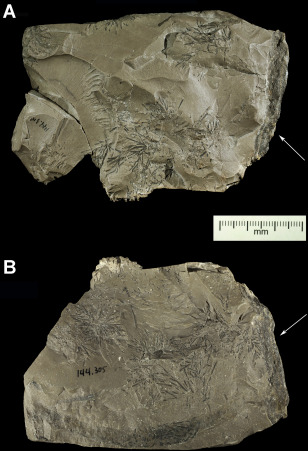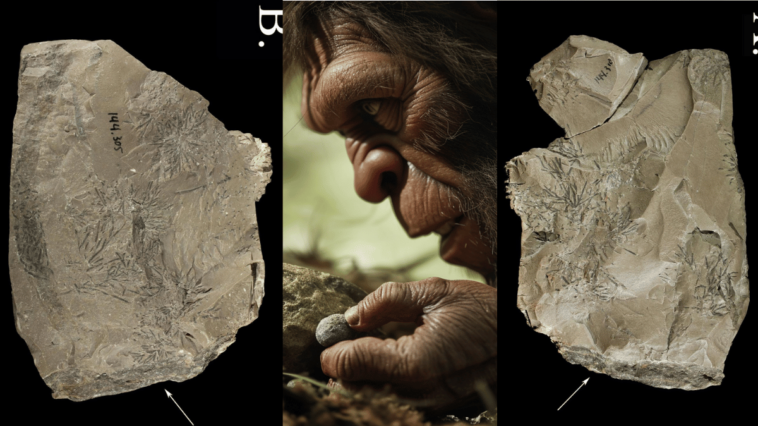In Croatia, a distinctive limestone artifact has been found in a Neanderthal settlement, challenging traditional assumptions about Neanderthal culture. This artifact, a piece of limestone, was different from the surrounding cave’s geological composition, hinting that it may have been intentionally selected and brought into the cave by Neanderthals, who inhabited the area around 130,000 years ago.
The finding, by an international research team, points to the possibility that Neanderthals may have had the capacity to attribute symbolic meanings to objects.

- Dimensions: The limestone is approximately 5 inches in length, 4 inches high, and a half-inch thick.
- Appearance: Characterized by contrasting black streaks on its brown surface.
- Condition: The stone’s current state shows no signs of being fashioned into tools.
- Context: Found within a predominantly sandstone cave, making it a geologically distinct object within the setting.
Researchers speculate that the inclusion of this rock in the Neanderthal collection could indicate aesthetic or symbolic appreciation, not merely utilitarian purpose. This notion is bolstered by the fact that there are no modifications suggesting tool use, and the stone exhibits a unique visual pattern.
In the past, Neanderthals have been credited with the use of eagle talons as adornment, and the use of pigments on shells—suggesting that they engaged with objects in a way that went beyond basic survival needs.
The consistent selection and collection of seemingly non-utilitarian objects such as talons, pigments, shells, and now, this limestone, contribute to a growing body of evidence that Neanderthals may have had a sense of curiosity and an eye for special or visually distinctive objects.
Location of Discovery:
- Site: Krapina, Croatia
- Initial Collection: Over 100 years ago during an excavation
- Housing: Items preserved at the Croatian Natural History Museum in Zagreb
Speculations on the Rock’s Origin: It is possible that the rock was found in an outcrop a few kilometers north of the site or was transported closer to the cave by a local stream.
The importance of this discovery is that it adds a nuanced layer to our understanding of Neanderthals. It implies that such early humans were not merely the rudimentary, basic tool-makers as often depicted but were beings capable of sophisticated thought and perhaps an appreciation for beauty or unique characteristics in objects.


